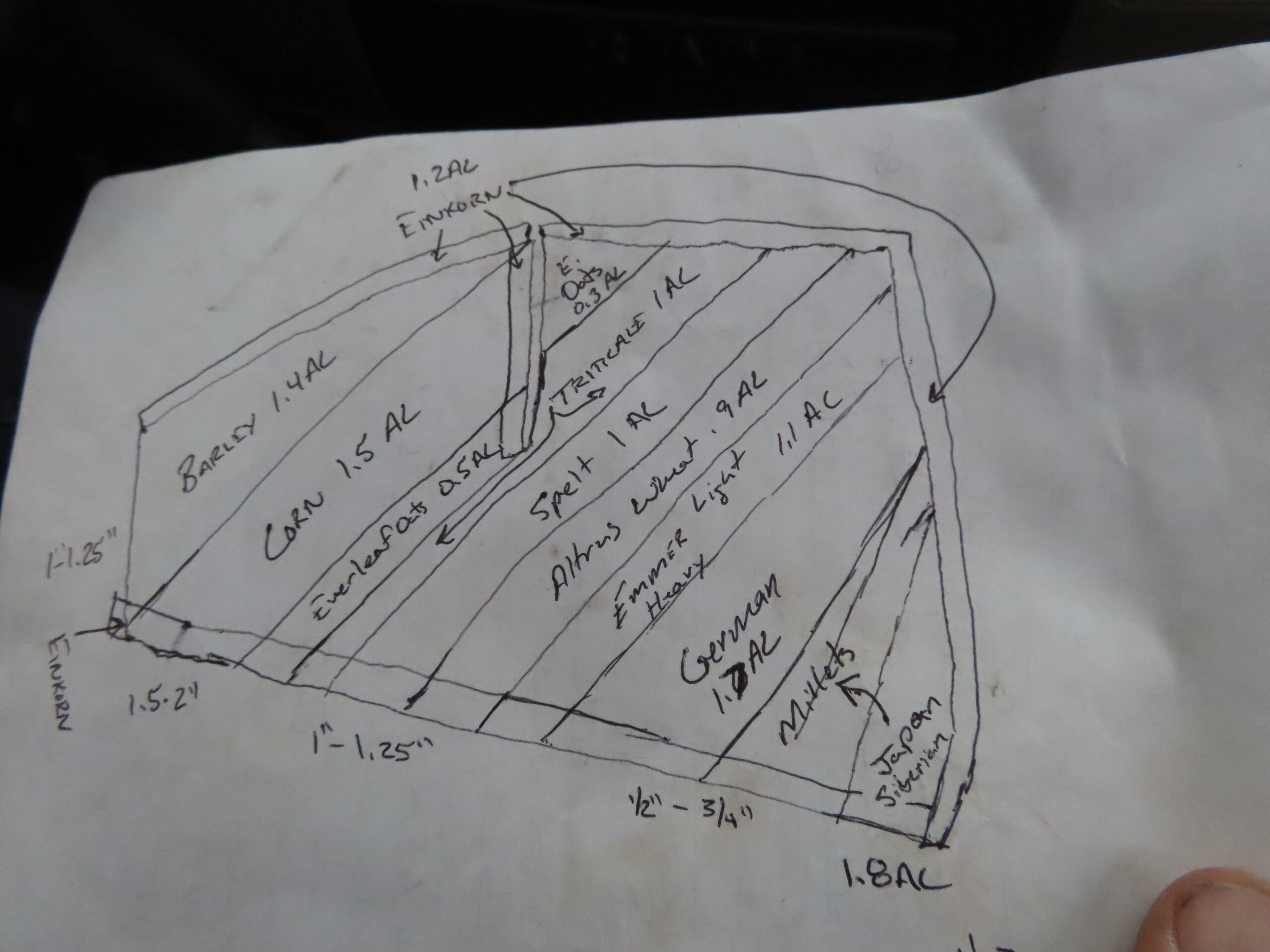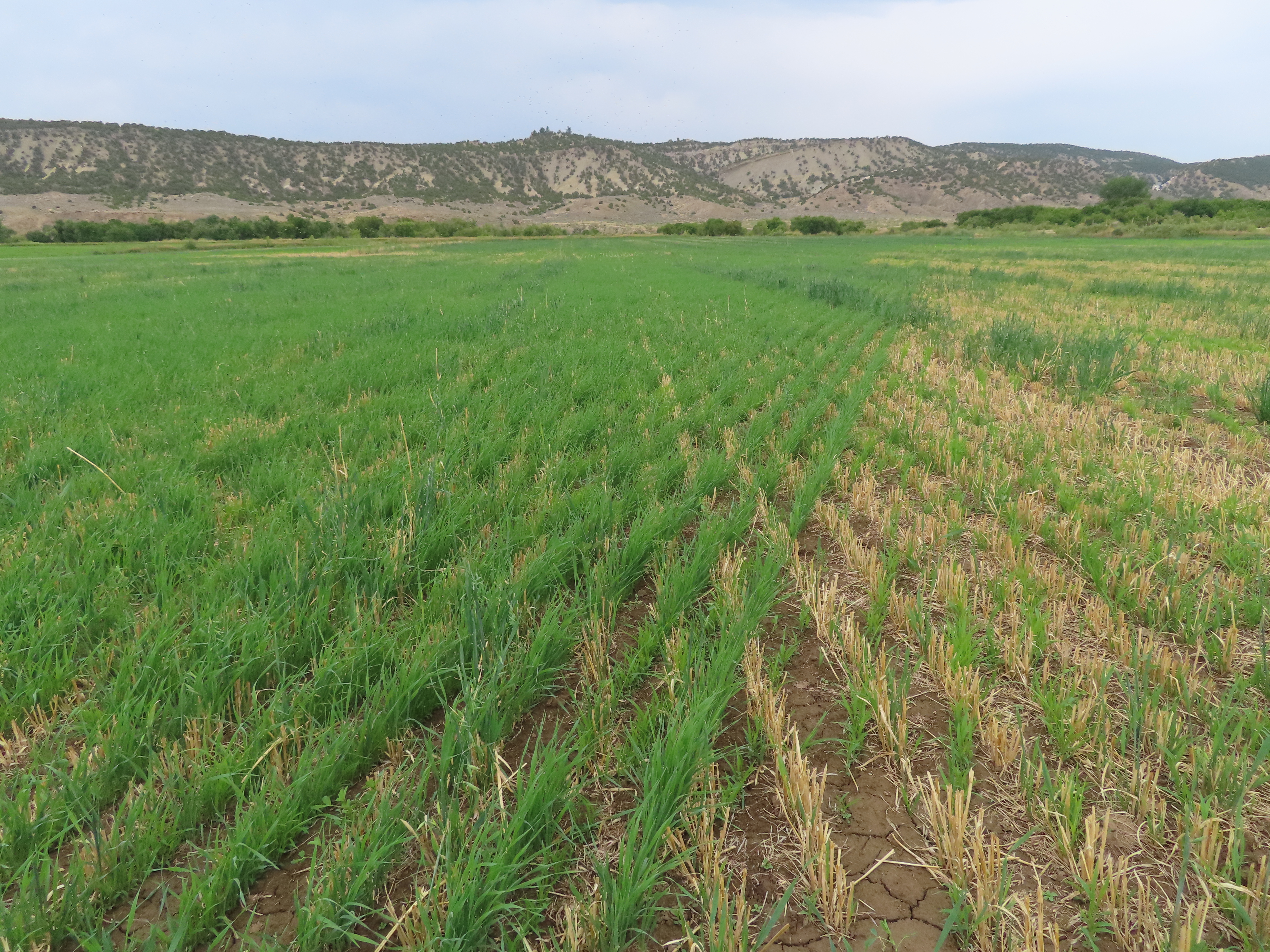I went out with Daniel on August 21 to check one of our fields. We had raised and baled oat hay off of it. Oat hay is simply hay made from oats that have not matured and created the oat seed that we love to eat. Since it is cut like you mow your lawn, it can have regrowth for cattle to graze when they’re on the fields in fall and winter.
One of our friends is also the Washakie County Ag Extension Educator. She is very interested in ancient grains and has test plots around the Big Horn Basin for spelt, emmer, and einkorn. Never heard of them? Well, we hadn’t either until she started talking about them! Come to find out, modern wheat is their descendent…
She had some bags of various grains and wondered if we’d like to plant some to see how they’d grow here. We knew they wouldn’t be a full season plant, we wouldn’t see them grow enough to produce, but they would provide some grazing. Did we want to try them? Sure!
At the time of these photos, they’d been in the ground three weeks. Some leakage from the irrigation ditch watered some parts of the field earlier than others, and there was a difference!

Daniel planted: Siberian millet, Japanese millet, German millet, Emmer (planted both heavy and light seeds per acre), Altus wheat, spelt, triticale, everleaf oats, corn, barley, and einkorn.
You can see the old, brown oat rows going one way, with all the new grains planted at an angle so you can see the difference.

Even some of the grain that hadn’t emerged was there under the soil, beginning to sprout. Daniel found some!

I haven’t been back to the field in two weeks, but I’m sure it’s continuing to grow. We’ve had warm days but the nights are definitely getting cooler. We hope the frost stays away for a while longer allowing this test field to really give us a good look on what these ancient grains can do in this environment.

Good luck! It will be interesting to see how these grains work for you.
I have a small garden and enjoy planting a heritage variety corn that is so delicious…Golden Bantam…for those readers who might want to try it!
It will be interesting to find out!
Thanks for sharing Carol! It has been fun to see how these grains do as a forage. For those who are interested, locally grown grain and flour is available for purchase from Wyoming Heritage Grains .
http://www.wyomingheritagegrains.com